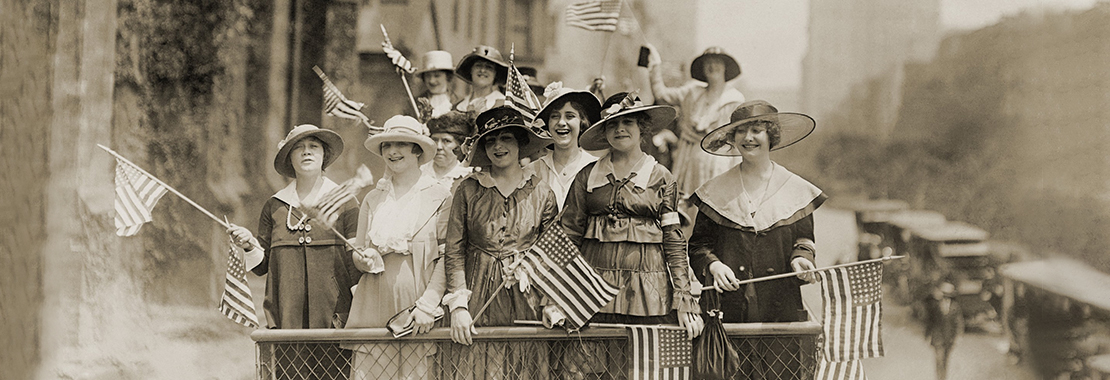Article Summary
- For Women’s History Month, we recognize women’s firsts in higher education|Women dominate higher education learning today, thanks to the women who fought for educational progress and equity|These women pioneers should continue to inspire the remarkable women who are learning, teaching and leading in higher education right now
- field_5cf83622ba22e
Colleen Zajac is a Senior Copywriter at Cengage with a zest for learning. She loves rock climbing, mountain biking and coffee—not necessarily in that order.
March is Women’s History Month, when we celebrate extraordinary women for their accomplishments and invaluable contributions throughout American history. This includes the many women who made significant advancements across higher education.
Today, female students outnumber male students at postsecondary institutions in the United States. Since 2010, the college enrollment rate has been higher for females. The National Center for Education Statistics (NCES) reports that the overall college enrollment rate for 18- to 24-year-olds in 2019 was 37 percent for males and 44 percent for females. According to the National Student Clearinghouse, nearly sixty percent of college students in the United States who enrolled in Spring 2021 were women.
While women currently dominate the higher education learning space, it hasn’t always been this way. For the women pioneers who paved the way, access to higher education was a long and challenging road.
A Brief History of Higher Education for Women
Women weren’t allowed to attend college until the 19th century. While colleges began admitting women in the 1800s, the initial programs were limited.
Oberlin College was the first to admit both men and women in 1833. However, it wasn’t until the 1840s that Oberlin granted degrees to female graduates. Before that, it awarded women with diplomas from the Ladies Program.
Seeing a need to offer women access to better higher education, Macon citizens and the Georgia Conference of the Methodist Episcopal Church founded Wesleyan College in Georgia. Wesleyan College was the world’s first women’s college, and the first American college to grant degrees to women. It officially opened its doors to 90 female undergraduate students in 1839.
Catherine Brewer was the first woman to receive her bachelor’s degree from Wesleyan College in 1840, and she was just one of the many amazing female pioneers who fought for equal education.
Female Firsts in Higher Education
Meet three other important American women in history who radically changed the higher education—and ultimately career—landscape for all.
Elizabeth Blackwell, the First Woman to Graduate Medical School
Elizabeth Blackwell was the first woman in the United States to receive a medical degree.
Over 20 medical schools rejected Elizabeth Blackwell until Geneva Medical College in New York accepted her as a prank. Although many of her professors ignored her and fellow male students ridiculed her, she graduated first in her class in 1849.
Post-graduation, Blackwell experienced discrimination as a female doctor, yet persevered. Dr. Blackwell went on to open the New York Infirmary for Women and Children in 1857 with her sister Dr. Emily Blackwell and colleague Dr. Marie Zakrzewska. In 1868, they opened a women’s medical college to provide women with medical training and to advocate for female doctors.
Harriette Cooke, the First Woman Professor to Earn a Man’s Salary
In 1857, Harriet Cooke became the first female professor in the United States. Hired as a full professor of German and History at Cornell College, she was paid the same salary as her male colleagues.
Within her 33-year career, she was promoted to Dean of Women in 1866. She also founded the Cornell Association for the Higher Education of Women. In 1873, Professor Cooke organized the Ladies Battalion, providing military training to women who drilled in skirted uniforms.
After her resignation from Cornell in 1890, she became superintendent of Medical Mission in Boston, where she developed a program to provide medical assistance to the poor.
Mary Jane Patterson, the First Black Woman to Earn a BA
In 1862, Mary Jane Patterson was the first black woman in America known to earn a college degree: a BA in Education from Oberlin College.
Patterson was born into slavery in Raleigh, North Carolina in 1840. It is unknown if the Patterson family was granted freedom or escaped slavery in the 1850s, before moving to Oberlin, Ohio. Mary Jane Patterson first enrolled in a one-year preparatory course at Oberlin College, where she excelled. She eventually enrolled in the four-year program and earned her degree with highest honors.
Patterson went on to teach at the Institute for Colored Youths in Philadelphia, now Cheney University of Pennsylvania. In 1871, she became the first black principal of a high school in Washington, D.C., a preparatory high school for black students, now Dunbar High School.
First, but Not the Last
Higher education looks very different for women today. We can thank these and the many other trailblazers who fought for educational progress and gender equity. They broke barriers, defied systemic prejudice and smashed glass ceilings to prove that women not only belong, but thrive, in higher education.
When Women’s History Month ends, the efforts of these women pioneers carry on. Their stories should continue to motivate the women who are learning, teaching and leading right now. So, they too can push boundaries, drive change and make lasting impacts in higher education.
While women have come a long way in higher education, female students still face unique challenges compared to their male peers. Learn about it in our eBook: Gender Discrimination in the Classroom and Beyond.

